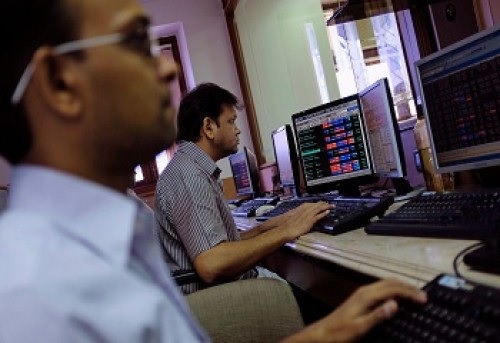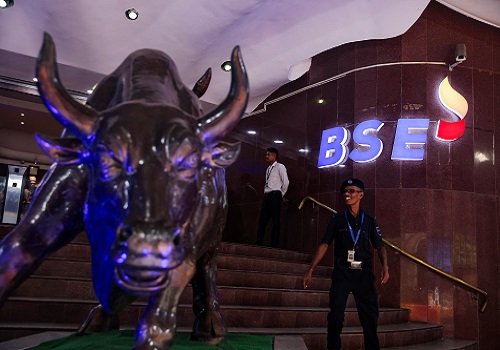Turmeric trading range for the day is 12888-13716 - Kedia Advisory

Gold
Gold prices declined by 0.57% to close at Rs.76,687, pressured by a stronger U.S. dollar and cautious investor sentiment ahead of key economic data and Federal Reserve commentary. Federal Reserve minutes highlighted optimism over easing inflation and a resilient labor market but maintained caution against premature rate cuts, signaling that future decisions hinge on economic trends. This uncertainty weighed on gold as higher rates dampen its appeal by increasing the opportunity cost of holding non-yielding assets. Globally, gold demand remained stable at 1,176.5 metric tons in Q3 2024, as increased investment activity offset weaker jewelry consumption, according to the World Gold Council (WGC). Total demand, including over-the-counter (OTC) trading, reached a record 1,313 tons for the third quarter, bolstered by a 97% surge in OTC flows to 136.5 tons. Physically-backed gold ETFs saw inflows of 95 tons, their first positive quarter since Q1 2022. However, bar and coin investment fell 9%, and central bank gold purchases dropped by 49%. On the supply side, mine production hit a Q3 record with a 6% increase, complemented by an 11% rise in recycling. In the physical market, Indian premiums remained steady at $3 per ounce, while Chinese discounts widened to $19-$21 per ounce. Technically, gold is under long liquidation, with open interest dropping by 2.07% to 12,375 contracts. Immediate support lies at Rs.76,245, with a breach likely testing Rs.75,805. Resistance is pegged at Rs.77,080, and a move above could target Rs.77,475.
Trading Ideas:
* Gold trading range for the day is 75805-77475.
* Gold dropped weighed down by a robust U.S. dollar.
* Trump called on BRICS nations to pledge not to establish or endorse an alternative currency to the U.S. dollar.
* Fed officials conveyed optimism that inflation is subsiding and the labor market remains robust, supporting the possibility of further interest rate cuts.
Silver
Silver prices edged lower by 0.44% to close at Rs.90,810, pressured by a stronger U.S. dollar fueled by optimism over the U.S. economic outlook and geopolitical tensions. President-elect Donald Trump’s threat of 100% tariffs against BRICS nations attempting to create a new reserve currency further bolstered the dollar. Meanwhile, global economic signals remained mixed. Chinese manufacturing activity expanded for the second straight month in November, spurred by Beijing’s stimulus measures, raising hopes for improved demand from the world’s largest metal consumer. However, the Eurozone's manufacturing PMI fell to 45.2, indicating sharper contractions, with employment witnessing its steepest drop since August 2020. The Silver Institute projected a 4% reduction in the global silver deficit to 182 million ounces in 2024, with industrial demand hitting a record high. Jewelry consumption is recovering, and physical investment is set to decline by 16%. On the supply side, mine production is expected to rise by 1%, driven by output from Mexico, Chile, and the U.S., while recycling is anticipated to grow by 5%.In India, silver imports are set to double this year due to demand from solar panel manufacturers and electronics, alongside investor interest in the metal's higher returns compared to gold. Silver is under fresh selling pressure, with open interest rising by 2.93% to 25,871 contracts. Support lies at Rs.89,975, with further downside to Rs.89,145 if breached. Resistance is at Rs.91,510, and a break above may target Rs.92,215.
Trading Ideas:
* Silver trading range for the day is 89145-92215.
* Silver prices fell as the dollar rebounded on optimism surrounding the US economic outlook.
* US President-elect Donald Trump threatened BRICS member countries with 100% tariffs.
* The ongoing slowdown in U.S. economic activity is expected to prompt further Fed rate cuts in December.
Crude oil
Crude oil prices fell by 0.6% to settle at Rs.5,779, as investors awaited the OPEC+ meeting rescheduled to December 5 and key U.S. economic data. The International Energy Agency (IEA) highlighted the risk of excess global supply exceeding 1 million barrels per day (bpd) in the coming months, signaling a potential oversupply scenario. Meanwhile, money managers reduced net long positions in U.S. crude futures and options by 15,464 contracts, reflecting cautious sentiment in the market. In the U.S., crude inventories fell by 1.844 million barrels last week, surpassing expectations of a 1.1 million-barrel draw, while stockpiles at Cushing, Oklahoma, dropped by 0.909 million barrels. However, gasoline inventories rose significantly by 3.314 million barrels, far exceeding the forecasted 0.2 million-barrel increase. The EIA’s latest report revised global oil demand growth forecasts downward to 1.2 million bpd for 2025, down 300,000 bpd from earlier estimates, citing weakening economic activity in China and North America. U.S. oil demand for 2025 is expected at 20.5 million bpd, a marginal decline from prior forecasts, while production forecasts were also slightly trimmed, with output for 2025 projected at 13.54 million bpd. The market remains under selling pressure, with open interest rising by 6.12% to 11,147 contracts, while prices dropped Rs.35. Crude oil finds support at Rs.5,735, with further downside possible to Rs.5,692. Resistance is expected at Rs.5,843, and a breakout could lead to testing Rs.5,908.
Trading Ideas:
* Crudeoil trading range for the day is 5692-5908.
* Crude oil prices decline amid Opec+ meeting anticipation and demand concerns
* IEA highlighted the risk of excess global supply exceeding 1 mbpd in the coming months
* Money managers cut their net long U.S. crude futures and options positions - CFTC
Natural gas
Natural gas prices fell by 3.39% to settle at Rs.273.6, driven by easing heating demand despite colder-than-normal weather boosting consumption recently. Weather forecasts suggest a shift from colder-than-normal to near-normal levels from December 4-12, reducing the pressure on utilities to draw heavily from storage. Production levels in the U.S. remain robust, averaging 101.4 billion cubic feet per day (bcfd) in November, compared to 101.1 bcfd in October, though still below the December 2023 record of 105.3 bcfd. The Energy Information Administration (EIA) projects U.S. natural gas production to decline to 103.3 bcfd in 2024 from 103.8 bcfd in 2023, with a rebound to 104.5 bcfd expected in 2025. Demand, including liquefied natural gas (LNG) exports, is forecast to hit record highs, rising to 90.0 bcfd in 2024, driven by increased LNG exports and seasonal factors. LNG export plant flows averaged 13.5 bcfd in November, up from 13.1 bcfd in October, reflecting a steady rise in export activity. U.S. utilities reported a withdrawal of 2 billion cubic feet of natural gas from storage, bringing inventories to 3,967 billion cubic feet, 3.5% above last year and 7.2% above the five-year average. The market witnessed long liquidation, with a 3.83% drop in open interest to 15,668 contracts. Prices are finding support at Rs.267.6, with further downside potential to Rs.261.7 if breached. Resistance is pegged at Rs.279.1, with a breakout possibly testing Rs.284.7.
Trading Ideas:
* Naturalgas trading range for the day is 261.7-284.7.
* Natural gas dropped as lower heating demand expectations have eased pressure on utilities to draw heavily from storage.
* US gas production remains robust at 101.5 bcfd in November, but well below last year’s peak of 105.3 bcfd.
* Average gas output in the Lower 48 U.S. states rose to 101.4 bcfd so far in November from 101.1 bcfd in October.
Copper
Copper prices gained 0.11% to settle at Rs.809.8 as optimistic signals emerged from China, the world’s largest consumer of the metal. SHFE inventories dropped significantly, shrinking by two-thirds in November to 108,775 tonnes, highlighting improving demand. The Caixin China Manufacturing PMI rose to 51.5 in November from 50.3 in October, surpassing market expectations and marking the strongest factory expansion since June. Growth in foreign orders and renewed export activity supported this uptick, although employment continued to contract modestly. China’s imports of unwrought copper rose by 1.1% year-on-year in October, reaching 506,000 metric tons, supported by seasonal demand and a more favorable consumption outlook. Total copper imports for the first ten months of 2024 increased by 2.4% to 4.6 million tons. Meanwhile, imports of copper concentrate for October stood at 2.31 million tons, up 0.2% from the same period last year. Globally, the copper market showed a deficit of 131,000 metric tons in September, a stark reversal from the surplus in August. The shortfall was particularly evident when adjusted for changes in China’s bonded warehouse inventories, recording a deficit of 149,000 metric tons. World refined copper consumption outpaced output, with September’s figures at 2.35 million metric tons versus 2.22 million metric tons, according to the ICSG. Copper experienced short covering, with open interest declining by 0.82% to 8,107 contracts. Support is at Rs.805.5, with further downside to Rs.801.2 if breached. Resistance is at Rs.812.6, and a breakout could push prices toward Rs.815.4.
Trading Ideas:
* Copper trading range for the day is 801.2-815.4.
* Copper gains amid positive signs have emerged in China.
* SHFE inventories falling by two-thirds since the beginning of the month 6 to 108.775 tonnes.
* US President Donald Trump has threatened to impose tariffs on imports, which would hurt economic growth and metal consumption.
Zinc
Zinc prices fell by 0.37% to settle at Rs.285.65 as Chinese demand remained lackluster due to the ongoing downturn in the property sector. However, inventories in Shanghai Futures Exchange warehouses declined by 10.6% week-on-week, indicating some improvement in demand. On the supply side, the easing tightness in zinc ore, driven by increased concentrate inventory and a slight rise in smelter output in Q4, provided modest support. Smelter production, despite growth, remains historically low at around 500,000 metric tons. Trafigura's recent withdrawal of over 97,000 metric tons of zinc from London Metal Exchange (LME) warehouses has fueled supply concerns, significantly tightening availability for other buyers. This led to a price rally earlier, but prices have since eased. The global zinc market reported a deficit of 79,500 metric tons in September, down from 85,000 tons in August, according to the International Lead and Zinc Study Group (ILZSG). For the first nine months of 2024, the global market was in an 8,000-ton deficit compared to a surplus of 358,000 tons in the same period last year. China's refined zinc production increased by over 2% month-on-month in September but fell by more than 8% year-on-year. Zinc faced long liquidation with open interest declining by 9.59% to 2,857 contracts. Immediate support is at Rs.284.1, with further downside to Rs.282.6. Resistance is at Rs.287.2, and a move above this could test Rs.288.8.
Trading Ideas:
* Zinc trading range for the day is 282.6-288.8.
* Zinc dropped as Chinese demand has been subdued amid a downturn in the property sectors.
* SHFE inventories fell 10.6% from last Friday.
* Under the background of winter stockpiling, the overall supply of ore remains tight.
Aluminium
Aluminium prices rose by 0.12% to settle at Rs.242.65, supported by signs of robust demand from China, the world's largest aluminium consumer. The increase was tempered by ongoing uncertainty surrounding potential U.S. tariffs. In Japan, premiums for January-March shipments of primary aluminium were offered at $230-$260 per metric ton, a sharp 31%-49% rise from the previous quarter, reflecting concerns over tightening supply in Asia following China’s cancellation of a 13% export tax refund on semi-manufactured products. Chinese exports of unwrought aluminium and related products rose significantly by 17% year-on-year to 5.5 million tons for the first ten months of 2024. In October alone, exports reached 577,000 tons, marking a 31% year-on-year increase. Despite this, domestic aluminium ingot social inventory increased by 14,000 metric tons week-on-week to 553,000 metric tons as of November 28, 2024. Aluminium production in October stood at 3.72 million metric tons, up 1.6% year-on-year, driven by improved market profitability and better demand prospects. For the first ten months, China's output reached 36.39 million tons, a 4.3% increase year-on-year. Aluminium is seeing fresh buying activity with a 1.36% rise in open interest to 3,362 contracts. Immediate support is at Rs.241.6, with a potential downside to Rs.240.4. Resistance is now pegged at Rs.243.7, and a break above this level could test Rs.244.6.
Trading Ideas:
* Aluminium trading range for the day is 240.4-244.6.
* Aluminium gains supported by emerging signals of firmer demand in China
* Global aluminium producers have offered Japanese buyers premiums of $230-$260 per metric ton for January-March primary metal shipments.
* Aluminium inventories in warehouses monitored by the Shanghai Futures Exchange fell 1.7% from last Friday
Cottoncandy
Cottoncandy prices dropped by 0.45% to settle at Rs.55,550, driven by profit booking despite robust demand signals from the garment and export sectors. India's cotton production in the 2024/25 season is projected to decline by 7.4% to 30.2 million bales, attributed to reduced acreage and crop damage from excessive rainfall. USDA has revised India's cotton production forecast to 30.72 million bales while lowering ending stocks to 12.38 million bales. Conversely, global cotton production is expected to rise slightly, with higher output in China, Brazil, and Argentina compensating for reductions in the U.S. and Spain. India’s cotton acreage has reduced by 9% to 11.29 million hectares as farmers in Gujarat shifted to groundnut cultivation for better returns. Lower domestic production is likely to impact exports, projected to decline to 1.8 million bales from 2.85 million bales a year ago, while imports may rise to 2.5 million bales. Domestically, cotton demand is expected to remain steady at 31.3 million bales. Globally, weaker import demand and production challenges in the U.S. have reduced the country’s export forecast by 300,000 bales to 11.5 million bales, reflecting broader global trade adjustments. The market is under fresh selling pressure, as evidenced by a 1.09% rise in open interest to 278 contracts, while prices declined by Rs.250. Immediate support for Cottoncandy is at Rs.55,360, with a potential test at Rs.55,160 if breached. Resistance is now at Rs.55,850, and a move above this level could push prices toward Rs.56,140.
Trading Ideas:
* Cottoncandy trading range for the day is 55160-56140.
* Cotton dropped on profit booking after support seen as Cotton yarn prices in south India increased.
* India's cotton production in 2024/25 is likely to fall by 7.4% from a year ago
* Cotton production is projected to increase in China, Brazil, and Argentina, more than offsetting reductions in the US and Spain – USDA
* In Rajkot, a major spot market, the price ended at 25932.2 Rupees dropped by -0.3 percent.
Turmeric
Turmeric prices settled down by 2.46% at Rs.13,218 due to profit booking after a recent price rally fueled by strong buying activity. Arrivals increased to 9,030 bags compared to 7,965 bags in the previous session, with major trading hubs like Hingoli and Erode seeing robust supply despite intermittent market closures in Hingoli due to ongoing assembly elections. Delays in harvesting, caused by prolonged rains and vegetation growth, are expected to temporarily constrain new crop arrivals, supporting price firmness in the near term. However, increased sowing activity across major states such as Maharashtra, Telangana, and Andhra Pradesh, estimated at 30-35% higher than the previous year, may exert pressure on prices once new supplies hit the market. Turmeric exports during April-September 2024 rose marginally by 0.96% to 92,911.46 tonnes compared to the same period last year. However, September 2024 exports declined by 4.06% month-on-month to 15,326.76 tonnes. On the import front, turmeric imports surged by 184.73% year-on-year during April-September 2024, totaling 15,742.12 tonnes. This highlights growing domestic demand and limited stock availability from the previous season, estimated at 35-38 lakh bags. The market witnessed long liquidation as open interest dropped by 1.47% to 8,390 contracts. Prices decreased by Rs.334. Turmeric is finding support at Rs.13,052, with a break below potentially testing Rs.12,888 levels. Resistance is likely at Rs.13,466, and a move above this level could see prices testing Rs.13,716.
Trading Ideas:
* Turmeric trading range for the day is 12888-13716.
* Turmeric dropped on profit booking after prices rose on strong buying activity amid reports of low supplies.
* Turmeric arrivals rose to 9,030 bags from 7,965 bags in the previous session.
* Although crop acreage has improved, delay in harvesting due to prolonged rains may impact the timelines of fresh supplies.
* In Nizamabad, a major spot market, the price ended at 13916.8 Rupees dropped by -1.43 percent.
Jeera
Jeera prices settled up by 0.34% at Rs.25,340 due to delayed sowing in Gujarat and Rajasthan caused by higher day temperatures and poor germination. In Gujarat, only 57,915 hectares have been sown till November 25, significantly lower than last year’s 2.44 lakh hectares during the same period. This represents just 15% of the state’s normal jeera sowing area of 3.81 lakh hectares. Production in Rajasthan is also expected to decrease by 10-15%, adding to supply concerns. India’s cumin production rose to 8.6 lakh tonnes in 2023-24 from 5.77 lakh tonnes in the previous year, driven by increased cultivation. However, the delayed sowing and reduced area this season may lead to a 10% drop in production. On the export front, India remains the most competitive supplier, with prices at $3,050 per tonne, significantly cheaper than Chinese cumin. Jeera exports for April-September 2024 surged by 70% year-on-year to 119,249.51 tonnes, with September exports up 162.34% from the previous year. International demand, particularly from Europe and China, has risen due to festive seasons and geopolitical tensions in the Middle East, supporting the market. The market witnessed short covering, with open interest dropping by 8.36% to 1,941 contracts as prices increased by Rs.85. Jeera finds support at Rs.24,980, with a break below potentially testing Rs.24,600. Resistance is seen at Rs.25,610, and a move above this level could push prices to Rs.25,860.
Trading Ideas:
* Jeera trading range for the day is 24600-25860.
* Jeera gained as sowing has been delayed in Gujarat and Rajasthan on weather issues.
* Higher day temperatures in the past few weeks has impacted the seeding of jeera and has also led to poor germination in various places.
* In Gujarat, jeera sowing has taken place in only 57,915 hectares till November 25 during the rabi 2024-25 cropping season.
* In Unjha, a major spot market, the price ended at 24898.4 Rupees gained by 0.1 percent.
Views express by all participants are for information & academic purpose only. Kindly read disclaimer before referring below views























